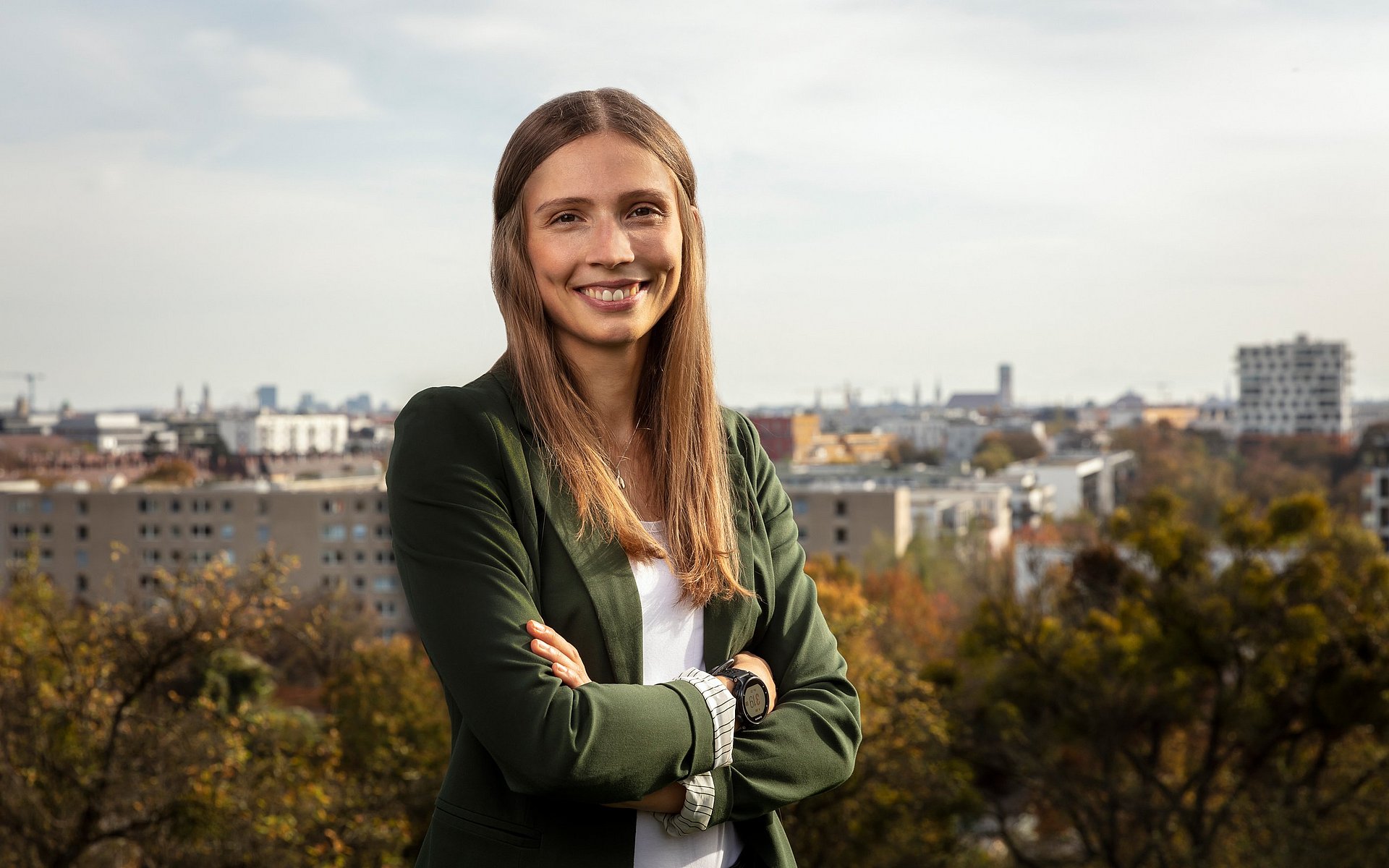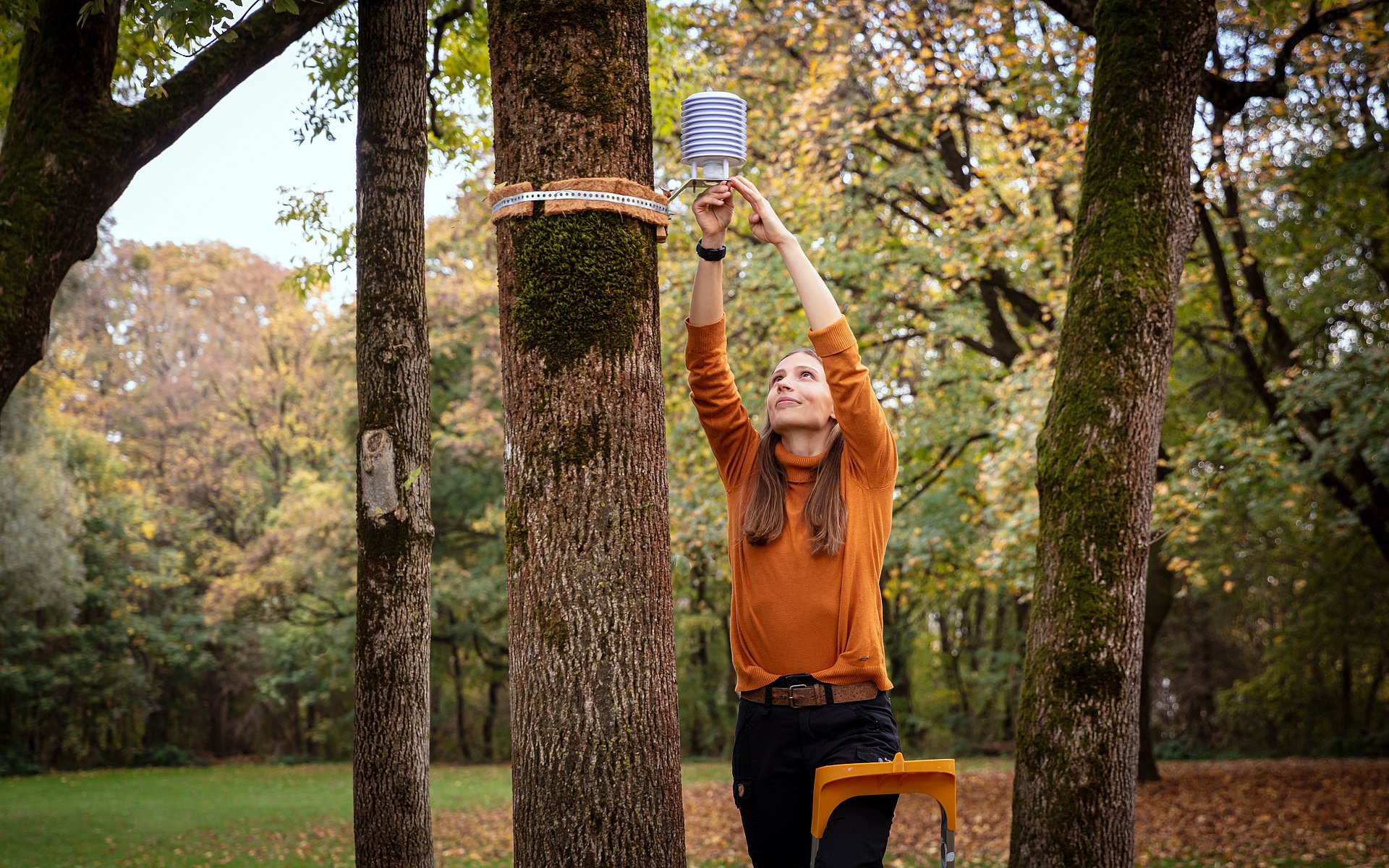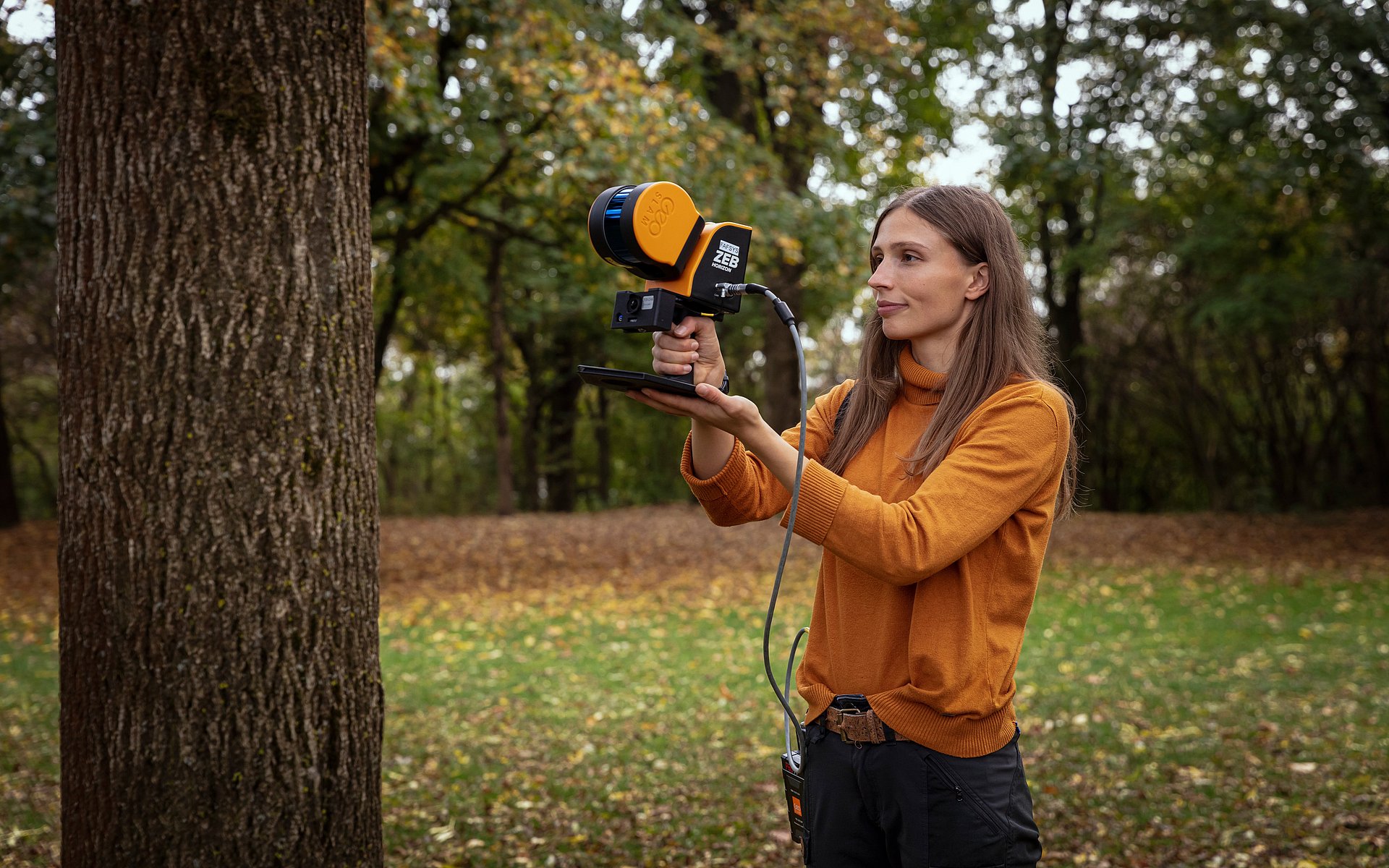Research project “Urban Oases in Times of Climate Change” investigates green spaces in Munich
Sustainable and climate-resilient urban development

What is your project “Urban Oases in Times of Climate Change” all about?
Cities are particularly affected by climate change, especially through extended heat waves. Green spaces can make a difference, for example by providing thermal comfort on hot summer days. A network of such areas can also help to meet the increased demand for outdoor recreation and natural surroundings. The project is intended to show how urban oases can be created, protected and developed as a contribution to urban climate adaptation and addressing[AS6] public health concerns in the face of climate change.
What is your function in this project?
I am primarily concerned with the research questions on the climate-related importance of green spaces in Munich. The project includes three doctoral theses. My colleagues Stefanie Burger (Professorship for Urban Productive Ecosystems under the leadership of Prof. Monika Egerer) and Birgit Probst (Chair of Forest and Environmental Polices, Prof. Michael Suda) are addressing the participatory social research. They will conduct surveys to investigate various factors related to residents’ wellbeing.
Who can take part in the surveys?
Everyone can take part. It’s quite easy. Respondents can either scan the QR code on the posters and flyers in the green spaces or access the open survey on our website at www.stoasen.de. They can then select and describe their own favorites among Munich’s urban oases.
What do your tasks look like in detail?
I am responsible, among other things, for taking care of around 100 climate stations across the city. I also apply terrestrial laser scaninng to analyze the vegetation structure in 35 parks and green spaces.

What makes this project so special to you personally?
I believe that we can overcome the challenges now facing society only if all actors – the general public, urban planners, green space managers, representatives of the public health system and we, as scientists – collaborate closely. So I especially like the inter- and trans-disciplinary approach and the connection to practical applications. Because quantitative scientific approaches are often not combined with social research.
What will happen with the results of the surveys?
We’ll look at which social and ecological aspects are important to city residents with regard to “their urban oases”. We will combine these insights with the spatial/structural parameters and micro-climate data to learn more about factors impacting human well-being.
Where will your project be applied?
Urban oases need to be prioritized in urban planning. The results of the project will be combined to formulate recommendations for municipalities and planners for future-ready urban design.

What are your personal impressions of Munich’s green spaces?
At the beginning of the project I cycled through every green space inside the Mittlerer Ring circular road and was amazed at how green Munich is in general. It doesn’t always have to be the English Garden.
Do you have favorite urban oases?
I was especially impressed with S. Goudstikker Park in Ramersdorf. With the many old trees there, you almost feel like you’re in the forest. I was also fascinated by the Dichtergarten (Poets’ Garden), which seems much more naturalistic than the neighboring Hofgarten.
What issues are you passionate about?
It motivates me to see how many people are investing a lot of time and energy in making their city more livable, climate-resilient and sustainable. Like the African proverb, "If many little people, in many little places, do many little things, they can change the face of the Earth."
Do you have a vision?
After completing my doctorate I want to contribute to making our cities more climate resilient and ensuring that we will still feel comfortable in urban spaces in the future. I’m still undecided about whether that will be in the world of research, as an urban planner or in green space management.
- Sophie Arzberger (25) grew up near Nuremberg. She studied geosciences at the Friedrich Schiller University Jena and geoecology in Bayreuth, where she volunteered with a nature conservation association that promotes nature-based urban planning.
- Sophie Arzberger chose TUM due to its impressive expertise in urban climate and ecology and the network that facilitates cross-project collaboration on multiple levels. She is doing her doctorate under Prof. Peter Annighöfer, Forest and Agroforest Systems at Weihenstephan.
- The survey on Munich’s urban oases is open to everyone: either by scanning the QR code on the posters and flyers in the green spaces or at www.stoasen.de. Respondents can select the green space in Munich that gives them a special sense of wellbeing.
- The Instagram feed @stadtoasenmuc offers a look at research activities as well as inspirations for exploring Munich’s green spaces on foot or by bicycle.
Technical University of Munich
Corporate Communications Center
- Katharina Kipfelsberger / Verena Meinecke
- presse@tum.de
- Teamwebsite
Contacts to this article:
Sophie Arzberger
Technical University of Munich
TUM School of Life Sciences
Professorship for Forest and Agroforest Systems
phone +49 (0)8161 71-4696
sophie.arzberger@tum.de